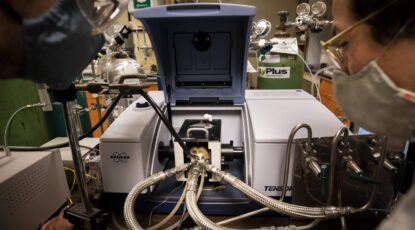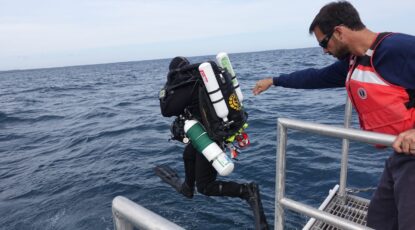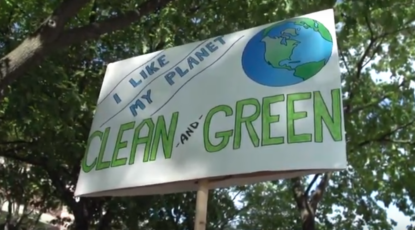Environment
-
U-M combats residential flooding in Detroit
The city’s aging infrastructure is no match for the severe effects of climate change. But with $1 million from the Kresge Foundation, U-M’s School for Environment and Sustainability will work with local partners to mitigate flooding and other concerns.
-
$2M to replace fossil fuels with solar power in fertilizer production
U-M researchers will study the effectiveness of a new ammonia production process aimed at reducing greenhouse gas emissions. Bringing the process directly to farmers could cut environmental costs by reducing transportation requirements.
-
Lake Huron sinkhole surprise
Researchers propose that increasing day length on the early Earth may have boosted the amount of oxygen released by photosynthetic cyanobacteria, changing the planetary rotation rate.
-
U-M commits to carbon neutrality universitywide
President Schlissel at May 2021 Regents meeting: U-M will achieve carbon neutrality across all greenhouse gas emission scopes, committing to geothermal heating and cooling projects, electric buses, and more.
-
17-year cicadas and tree damage: What to expect
The cicadas can damage small trees and shrubs so the best defense is to cover vulnerable or smaller trees with mesh or netting; insecticides should not be used, experts say.
-
Biologist eagerly awaits cicada song
After developing underground for 17 years, the buzzing, bug-eyed horde of cicadas known as Brood X is expected to emerge by the billions in May across southeastern Michigan and other eastern states. Let’s sing!
-
University sourcing electricity from new wind parks
Approximately half of the purchased electricity for U-M’s Ann Arbor campus will soon come from Michigan-sourced renewable resources.
-
Private sector action may be linchpin to conservative support on climate change
Study: Conservatives are more supportive of private-sector action than public-sector action, while liberals are more supportive of government regulations than private-sector action or a carbon tax.
-
Water scarcity footprint reveals impacts of individual dietary choices in US
Meat consumption is the top contributor to the water scarcity footprint of the average U.S. diet, but other foods grown in U.S. regions where water is scarce also have high water-scarcity footprints, researchers find.










